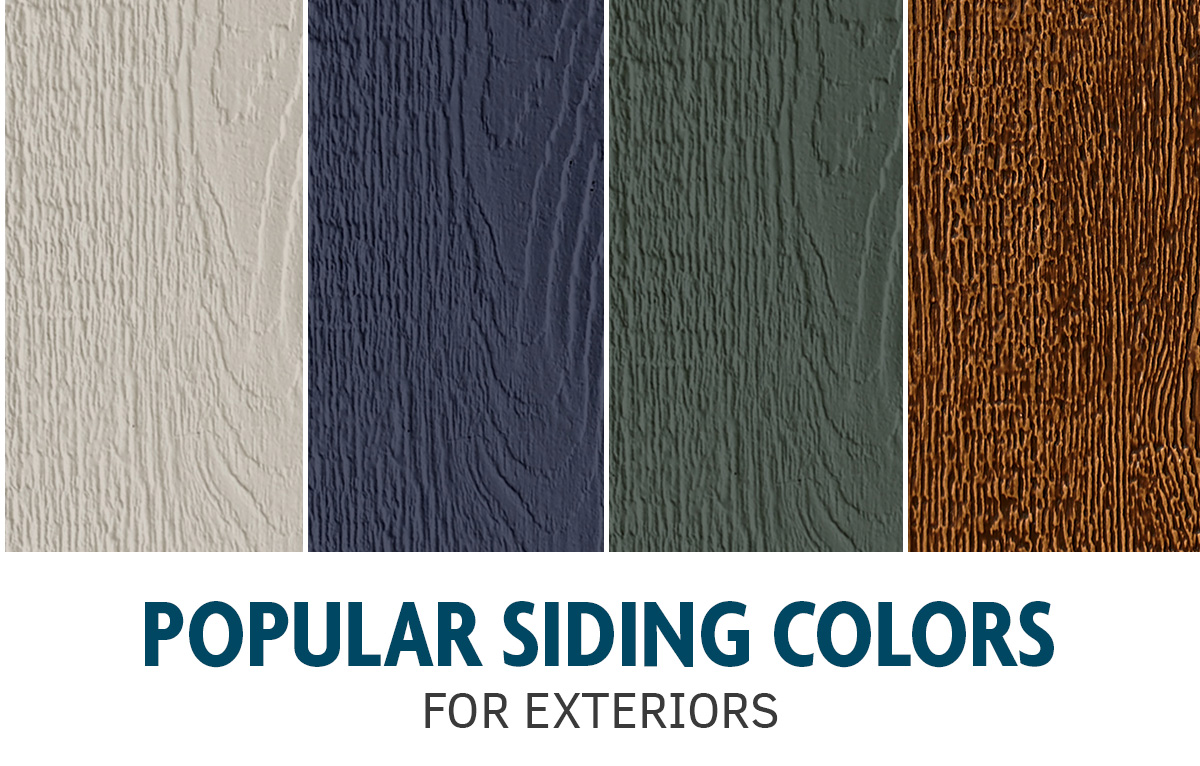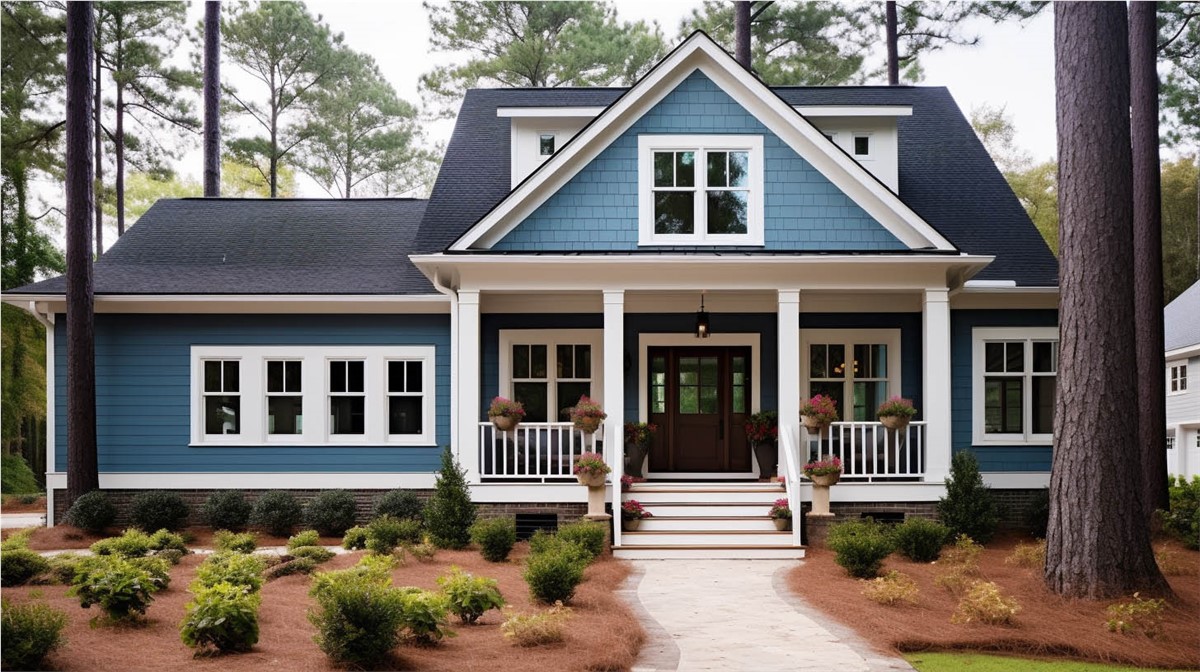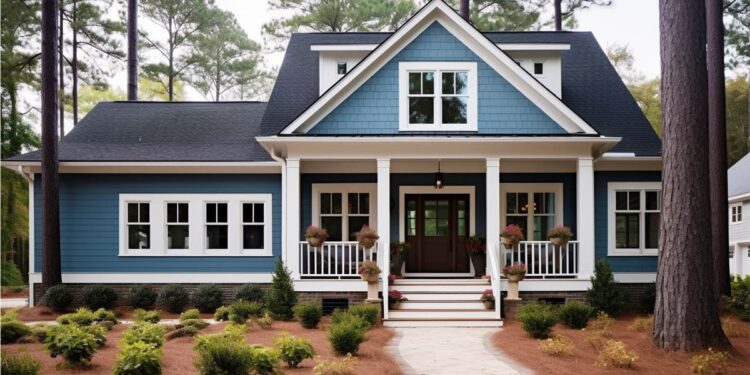Exploring the world of siding colors that perfectly complement smart home aesthetics opens up a realm of possibilities. From sleek neutrals to bold statements, the choices are endless. Let's dive into the exciting journey of finding the perfect color palette for your tech-savvy home.
As we delve deeper into the nuances of siding colors and their impact on smart home aesthetics, a fascinating narrative unfolds, revealing the intricate dance between color psychology and modern technology.
Choosing Siding Colors

When it comes to selecting siding colors for a smart home, there are some key differences compared to choosing colors for a traditional home. Smart homes are equipped with cutting-edge technology and have a more modern aesthetic, which should be reflected in the choice of siding colors.
Popular Siding Color Trends
Popular siding color trends that complement modern smart home aesthetics include:
- Neutral tones such as gray, beige, and white, which provide a sleek and contemporary look that pairs well with the high-tech features of a smart home.
- Dark colors like charcoal or navy blue, which create a striking contrast against the modern elements of a smart home and add depth to the overall design.
- Earth tones such as olive green or terracotta, which bring warmth and a natural feel to the exterior of a smart home, balancing out the technological aspects.
Consideration of Factors
When choosing siding colors for a smart home, it is important to consider factors such as the architectural style of the house and its surroundings. For example, a sleek and minimalist smart home may benefit from a monochromatic color scheme to maintain a clean and cohesive look.
On the other hand, a smart home with a more traditional design may look best with siding colors that complement its classic features.
Color Psychology and Smart Homes

Color psychology plays a crucial role in the overall aesthetics and mood of a smart home. The siding color chosen can significantly impact the perception of the home's high-tech features and modern design. Let's delve into how different siding colors can influence the look and feel of a smart home.
Neutral Colors vs Bold Colors
Neutral colors, such as white, beige, or gray, are often associated with minimalism, cleanliness, and sophistication. When used as siding colors for a smart home, neutral tones can create a sleek and timeless look that complements the cutting-edge technology within.
These colors provide a sense of calm and openness, enhancing the overall modern appeal of the smart home.On the other hand, bold colors like navy blue, forest green, or deep red can add a pop of personality and vibrancy to a smart home's exterior.
Bold siding colors can make a statement and create a striking contrast with the sleek lines and contemporary design of the smart home. These colors evoke energy, creativity, and individuality, making the home stand out in a modern neighborhood.
Enhancing the High-Tech Look
Specific siding colors can further enhance the high-tech look of a smart home. For example, choosing a dark charcoal or black siding color can create a sophisticated and futuristic appearance, especially when paired with metallic accents or smart lighting systems.
These darker colors can mimic the sleek design of technology gadgets, seamlessly integrating the smart home features with the exterior aesthetics.Alternatively, opting for a light and airy siding color like a soft blue or pale yellow can evoke a sense of freshness and innovation.
Lighter colors can make the smart home feel more inviting and welcoming, while still maintaining a modern and high-tech vibe. Pairing these colors with smart landscaping features or energy-efficient elements can elevate the overall sustainability and eco-friendliness of the smart home.
Harmonizing with Technology
When it comes to coordinating siding colors with smart home technology features like cameras, sensors, and digital displays, there are a few key tips to keep in mind
Highlighting Tech Elements with Contrasting Colors
- Consider using a bold siding color like deep blue or dark gray to create a striking contrast with sleek white cameras or sensors.
- Opt for a bright and vibrant siding color such as red or yellow to make digital displays or touch screens stand out against the facade of your home.
- Contrasting siding colors can help draw attention to specific tech features, making them more prominent and visually interesting.
Integrating Seamlessly with Complementary Colors
- Choose siding colors that complement the tones of your smart home technology, such as matching a warm beige siding with bronze or copper accents on cameras and sensors.
- Opt for a neutral siding color like light gray or taupe to create a cohesive look that blends seamlessly with the modern aesthetic of your home automation gadgets.
- Complementary siding colors can help create a harmonious flow between the exterior of your home and the tech elements integrated into it.
Significance of Achieving a Cohesive Look
By harmonizing siding colors with smart home technology features, you can achieve a unified and polished appearance for your home. A cohesive look not only enhances the overall aesthetic appeal but also ensures that your modern home automation gadgets seamlessly blend in with the architectural design of your property.
Sustainable and Energy-Efficient Options
When it comes to siding colors for smart homes, sustainability and energy efficiency play a crucial role in reducing environmental impact and optimizing performance. Choosing eco-friendly options can align with the overall goals of a smart home in promoting a greener lifestyle.
Eco-friendly Siding Color Choices
Opting for sustainable siding colors such as earth tones or cool shades can contribute to the energy efficiency of a smart home. These colors have the ability to absorb or reflect heat, helping to regulate indoor temperatures and reduce the need for excessive heating or cooling.
Darker vs. Lighter Siding Colors
Dark siding colors tend to absorb more heat from the sun, which can be beneficial in colder climates by providing natural warmth to the home. On the other hand, lighter siding colors reflect heat, keeping the interior cooler in warmer climates and reducing the reliance on air conditioning systems.
The choice between darker or lighter colors can significantly impact the energy performance of a smart home.
Last Point
In conclusion, the fusion of siding colors and smart home aesthetics creates a harmonious blend of style and functionality. By understanding the nuances of color psychology, coordinating with technology, and embracing sustainable options, you can elevate the visual appeal and efficiency of your smart home.
Detailed FAQs
How do I choose the right siding color for my smart home?
Consider the architectural style, surrounding environment, and popular trends that complement modern smart home aesthetics.
What impact do different siding colors have on the mood of a smart home?
Neutral colors create a calming atmosphere, while bold colors can make a statement and enhance the high-tech look of a smart home.
How can I coordinate siding colors with smart home technology features?
Consider contrasting or complementary colors to highlight or seamlessly integrate tech elements, achieving a cohesive look.
Are there sustainable siding color options for smart homes?
Explore eco-friendly choices that align with sustainability goals and contribute to energy efficiency and environmental impact.
Do darker or lighter siding colors affect smart home energy performance?
Yes, certain colors can optimize energy performance, so choose wisely based on your home's needs.









